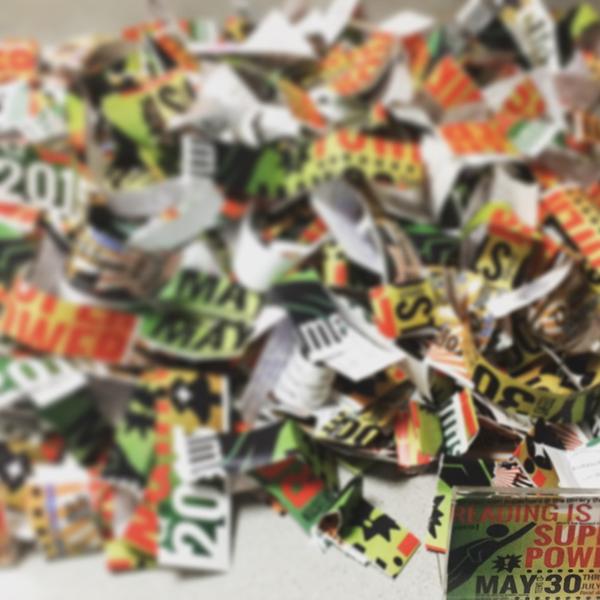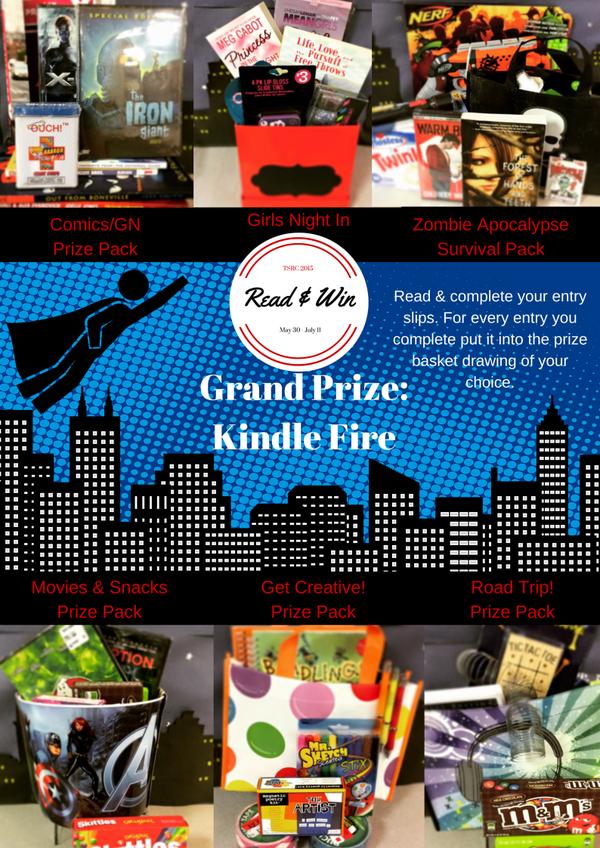How Do You Measure Summer Reading Participation?
How do you ask teens to keep track of their reading during your summer reading program? That is one of the ongoing questions we seem to be asking ourselves each year as we approach summer reading.
My 21st teen summer reading program has just come to an end. I emptied out containers of reading slips and counted entries. This year there were 462, up more than 200% from the year before at the library I am currently working. And these numbers are a big increase from the average numbers I have had over the many and various programs I have hosted over years past.
ADVERTISEMENT
ADVERTISEMENT
This year, I did something different.
When I moved to Texas it was a new field of public libraries to visit and learn from, and visit I did. I happened once, in the only summer that I did not have a summer reading program in the past 22 years because we had just moved and I didn’t have a job, to visit the Arlington Public Library in Texas. They did something unique in their summer reading that I have always wanted to try. And this year I was finally able to try it.
Instead of having a random variety of prizes or thing for teens to win for completing some basic reading, we went big. I put together a variety of thematic prize packages that teens could enter to win, giving them more choice. When they read a book, they put a drawing slip into the prize basket of their choice. Then, all their reading entries went into a grand prize drawing in which we gave away a Kindle Fire. My teen summer reading station looked like this:
 I had size prize basket options:
I had size prize basket options:
Girls Night In, which included movies like Mean Girls, candy, and fun spa type items.
Zombie Apocalypse Survival Kit, which included a Nerf zombie gun, Twinkies (those who have seen Zombieland will get this reference), a water bottle, a flashlight and a variety of zombie titles
Road Trip, which included some audio books, games you can play in the car, and snacks of course
The Creative Life, which included a variety of fun craft items, magnetic poetry, journals, etc.
GN and Comic Book Lovers, which included a variety of gns, manga, I Am Princess X, etc.
Movie Lovers, which included a variety of DVDs, some books that had been turned into movies, a cool popcorn bucket and a variety of other snacks
As teens read, they had slips that they could put into the prize basket(s) drawings of their choice.
In the past, I have tried a variety of different types of book reporting. In some cases, everyone who read at least one book got something when they turned in their first entry form. The problem with this method has always been that in order to keep it in budget that something has always been something cheap and not really very enticing.
In other years, I did weekly drawings for slightly larger items, like various small gift cards to places like Taco Bell.
There are pros and cons to all of the various reporting methods. And we could always have the discussion about incentivizing summer reading and whether or not it achieves the ends goals we hope to achieve and truly encourages an innate love of reading for pleasure.
Yesterday, as I spent time doing my prize drawing and compiling some basic information to report to my admin, it looked something like this:
 Pros
Pros
Teens are given more choice in what types of prizes they want to win by entering into the prize baskets of their choice. Choice, I always think, is an important thing to give teens.
Because all the prize drawings take place at the end, it was pretty low maintenance, allowing me to spend more time invested in programming.
Cons
Putting the prize packages together was time intensive, especially since this was my first time doing this. It required some planning and revising, which took multiple trips to the store.
Going through the slips at the end has proven to be time intensive, though this depends on what type of information you want to cull from them.
ADVERTISEMENT
ADVERTISEMENT
One of the data points many libraries like to have is how many people register or sign up for a summer reading program and how many of those people actually complete the program. I have never been a big proportion of registration numbers. Registering for a summer reading program is, in my opinion, easy and these numbers give us no significant data. Registering is basically someone putting their name on a piece of paper saying I intend to participate in the summer reading program. They never have to read a single thing; counting intent is a meaningless statistic. I understand on some basic level why administrators may be interested in comparing completion rates, but I find registration to be another access hurdle to ask teens to jump over in order to participate. The more hurdles we eliminate, the more likely teens are to participate and enjoy the summer reading process.
As with any other summer reading program process I have investigated, it’s pretty easy to game the system. Every year a staff member will ask, “but how do you know if they are cheating or not?” And the correct answer is, you don’t. There is no summer reading reporting system that I have encountered that will successful weed out cheaters. Kids can cheat on their reading logs. Teens can cheat on their reading entries. Adults can cheat on their reading entries. Cheating does and is always going to happen. Some people are cheaters, but most aren’t so I’m not going to create hurdles for others based on the actions of a few. Summer reading should be fun, it should encourage reading and participation, it should be a way of inviting the public to explore what the library has to offer. I’m not going to lose sight of that goal in order to weed out a few cheaters.
Final Thoughts
Overall, I really liked this participation method. It definitely seems to have worked for us in terms of encouraging participation. And I thought it was very easy for staff as well as patrons. I will definitely be doing it again.
And thank you Arlington Public Library for the inspiration!
How do you measure summer reading participation? Share in the comments. I would love to know how others are doing this because I might find a new idea to borrow.
Filed under: Summer Reading
About Karen Jensen, MLS
Karen Jensen has been a Teen Services Librarian for almost 30 years. She created TLT in 2011 and is the co-editor of The Whole Library Handbook: Teen Services with Heather Booth (ALA Editions, 2014).
ADVERTISEMENT
ADVERTISEMENT
SLJ Blog Network
One Star Review, Guess Who? (#202)
Review of the Day: My Antarctica by G. Neri, ill. Corban Wilkin
Exclusive: Giant Magical Otters Invade New Hex Vet Graphic Novel | News
Parsing Religion in Public Schools
ADVERTISEMENT









I’m really intrigued by this method! So, each book read counts as one entry? And there’s no other reading log/signing up/tracking time read?
We do weekly drawings for $10 prizes (5-6 each week) with each book read counting as one entry. We also do sign-ups, a free book at sign-up, a reading log (30 minutes a day for 30 days), and coupons for kids who finish the reading log. The coupons are a big draw for some kids, and this is the first year we’ve tried giving away books at sign-up instead of completion – it’s hugely fun to give away that many books, and gives our sign-up numbers more meaning (we were inspired by the article on p. 14 – http://www.olaweb.org/assets/OLAQ/olaq_19no1.pdf – from a nearby library).
I could’ve missed it but what did you have the teens put on their entries and when did they get the opportunity to put in an entry?
Lauren,
I had entry slips available in the teen area at all times. Also at all circulation desks so staff could hand them to a teen as they checked out or in their books.
Karen